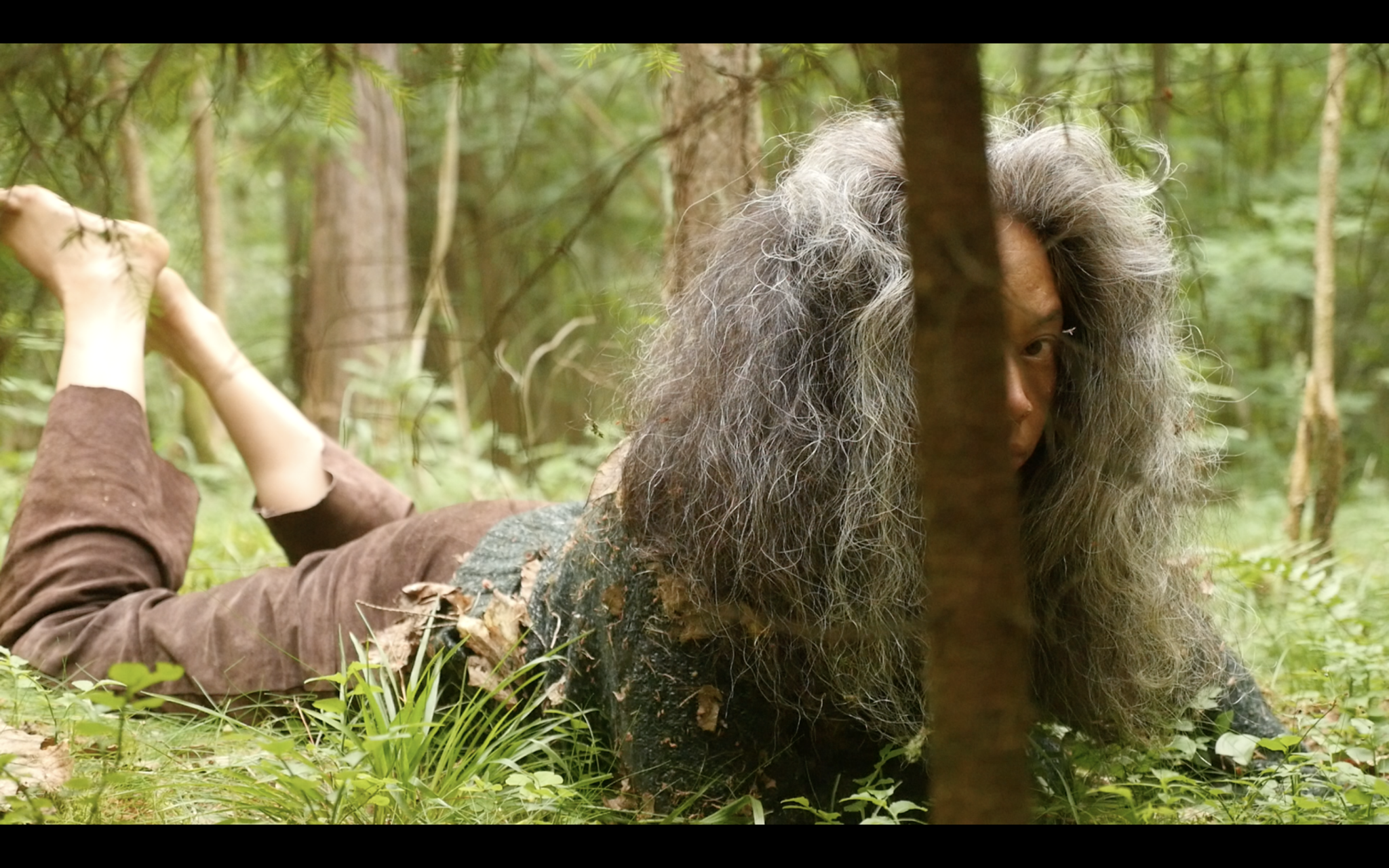Marte Reithaug Sterud
I’m on my way out to Kongsskogen on Bygdøy, my former Sunday hiking area, with detailed directions from the company Bodycartography project in hand. The company, run by the dance artists Olive Bieringa and Otto Ramstad, is at the intersection between art production and activism, and has previously shown site-specific performances such as Togethering (2019) at Schaus plass and a collection of fluid spaces (2022) at the Norwegian Technical Museum. In addition to the directions, the artists have hung red ribbons on trees that point the way to a small forest clearing. Practitioner Anu Laiho meets me on the road and gives me practical information for what will happen next. In the forest, I meet the rest of the athletes this afternoon; Ornilia Ubisse, Sigrid Vesaas, Uma Ramstad, in addition to Bieringa and Ramstad. All are dressed in green, purple or blue overalls, in a soft fabric with padding on the elbows and knees. The performance is participatory, so I change into the outdoor clothes I have with me. In the meantime, three more members of the audience arrive, so we are then a total of four members of the audience (including an infant) and five performers.
Resisting Extinction consists of several different “practices for living and dying together on a damaged earth”. For such a serious topic, the atmosphere is nevertheless warm and down, the weather is warm and a light breeze comes in from the Oslo Fjord.
To talk about the weather/to talk about the climate
Ramstad comes up to me and asks if I want to join a weather walk. He says that the weather walk is a conversation and that he will ask me questions and suggest things to do together, I can choose to join or not. As he leads me into a wooded area, he asks where I’m from and what the weather/climate is like there. I feel the contrast between having a non-committal conversation about weather and wind with someone you don’t know and the show’s theme of climate destruction, and give an automatic positive answer so that the conversation doesn’t become too heavy. Here I could have chosen to post about my concerns about climate change, but I choose instead to focus on the fact that it is a nice day to be out in the forest.
The conversation soon feels more natural. Ramstad stops at some trees which are supposed to be linden trees, he talks passionately about the trees and I am confronted with knowledge I don’t have or have forgotten. He suggests actions reminiscent of dance improvisation tasks, such as moving between and under branches, fast and slow. I break a couple of branches and immediately feel like a failed hippie, but Ramstad’s nimble and attentive management makes me quickly forget myself and indulge in the suggestions. We touch the trees, both dead and alive, embrace each of our trees, before we both lie on the ground. I look up at the foliage bathing in the sun, while Ramstad invites me to land in the body here and now, before he talks about mycelium – an intricate web of fungal threads that we cannot see, but which are located underground and are the support for our ecosystem. I imagine a parallel reality, a bit like the evil parallel universe The Upside Down in the Netflix series Stranger Things, only that this reality is stabilizing and takes care of necessities such as the decomposition of dead nature. I notice that I am receptive to this way of re-learning knowledge about nature, like an extended science lesson where I get to feel my body.
More knowledge
For me, the performance Resisting Extinction became a ritual where I could reflect on the climate crisis and its consequences. The conversational form in the first practice gave an informal entrance to venting my own thoughts and feelings, and the performance method in the second practice created a relaxed atmosphere where I could take in a possible future scenario. The participatory, open form made me think about my own role in the climate issue and whether I can do more for the climate than I already do. In this way, the performance activates a co-responsibility that makes me receptive to tools and knowledge that I do not already have. I think that this show primarily attracts audiences who are already involved in climate issues. In this way, the performance could further challenge the audience by providing even more knowledge, both about nature itself and about the societal consequences of climate change.




